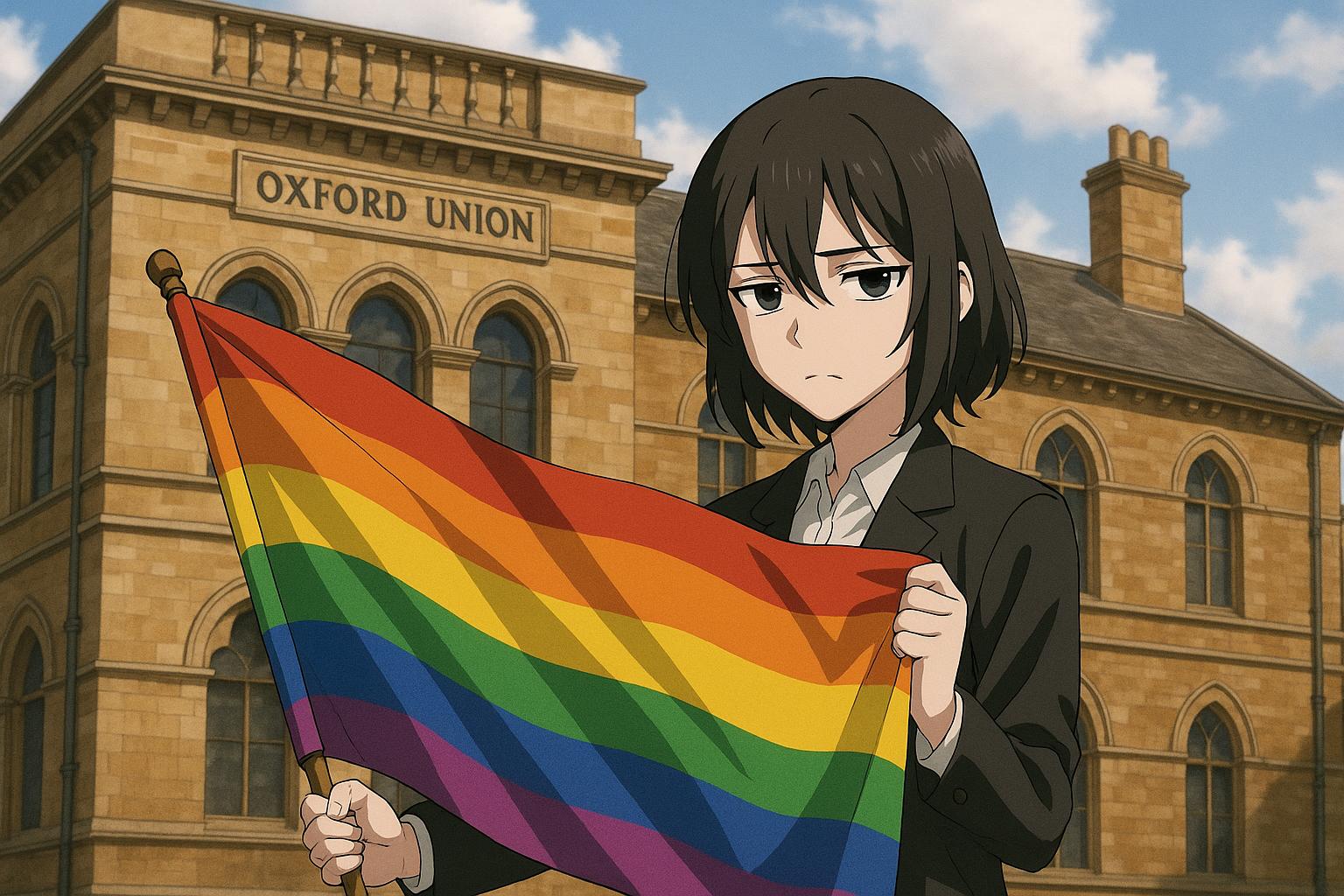The recent decision by the Oxford Union's standing committee to reject a motion to reinstate the flying of the Pride Flag during June has reignited discussions around inclusivity and the representation of LGBTQ+ communities in institutional spaces. This policy, which had been in place for five years, was inadvertently removed during a rules update, leading to a motion aimed at restoring it alongside additional measures providing the president with discretion to suspend the requirement during national mourning periods.
During a secret ballot on May 5, the proposal ultimately failed to gain traction, with only four votes in favour compared to seven against. Critics of the rule raised concerns that it might set a precedent, opening what they referred to as a "Pandora's Box" of demands for the display of various other flags. This sentiment echoes past instances, such as in 2016 when Abingdon-on-Thames Town Council similarly voted against flying the rainbow flag for Oxford Pride, citing fears of setting a precedent for additional flag requests and maintaining a policy that limited flag displays to national flags only.
Anita Okunde, the president of the Oxford Union, expressed her disappointment, stating, "Our society is better for the many backgrounds that make up our membership, and I hope we are able to resolve this in a democratic manner with a fair outcome for all." This reminder of the broader context of democratic dialogue highlights the ongoing tension between tradition and progress within such societies.
The decision was particularly poignant given the historical significance of symbols like the Pride Flag, which many view as essential in the promotion of inclusivity and acceptance. Robert Jordan, chairman of Oxford Pride, has consistently highlighted how the flag serves as a visual representation of solidarity with the LGBTQ+ community. His earlier remarks following Abingdon's refusal to display the flag noted its importance in fostering an inclusive environment, a sentiment that resonates strongly in light of contemporary events.
Moreover, the Oxford Union’s internal discussions surrounding this motion reflect a larger societal dialogue regarding symbols and their place in public discourse. Previous episodes have shown how institutions wield symbols as tools for both identity and exclusion. For example, in 2012, St Anne's College at Oxford University faced backlash after rejecting a call to fly the Pride Flag during LGBTQ History Month, despite unanimous support from the Junior Common Room. The college maintained strict policies on flag displays, prioritizing institutional flags over symbols of community support, a decision met with considerable frustration from students advocating for inclusivity.
The failed motion at the Oxford Union is also reflective of the broader tensions regarding free speech and expression, especially in educational institutions. An analogous situation occurred in May 2023, when a speech by Kathleen Stock was disrupted by over a hundred protesters from the university's LGBTQ+ Society. This incident highlighted the growing rift within academic communities over the implications of free speech, particularly on topics related to gender and sexuality.
The next steps for the Pride Flag policy will involve a Private Business Motion in which all members of the society will have the opportunity to vote. This forthcoming debate aims to ensure transparency and inclusivity in decision-making, aligning with the Union's democratic processes. The overarching hope is that a fair and considered conclusion will emerge from these discussions, reflecting the diversity of opinions and experiences within the Union.
The conversation surrounding the flying of the Pride Flag at the Oxford Union is emblematic of larger issues concerning representation, inclusivity, and the significance of symbols in our society. The ongoing review of flag policies and transparency in representation will likely shape the discourse in Oxford's academic and social landscape for some time to come.
Reference Map
- Paragraph 1: Sources 1, 2
- Paragraph 2: Sources 1, 2, 5
- Paragraph 3: Sources 1, 2, 3
- Paragraph 4: Sources 4, 6
- Paragraph 5: Sources 7, 5
- Paragraph 6: Sources 1, 2, 4
Source: Noah Wire Services
